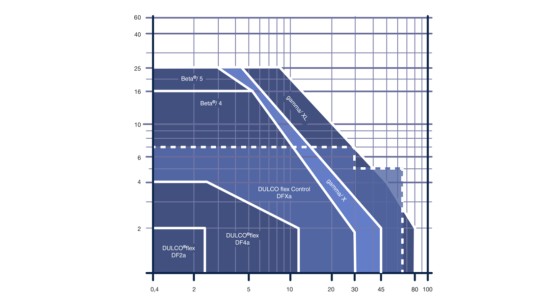Solenoid-Driven Metering Pumps
What they do
Solenoid-driven metering pumps are available in capacities ranging from 0.74 to 80 l/h at a back pressure of 25 to 2 bar. To be able to meter almost any liquid chemicals, ProMinent uses a very extensive range of materials.
How they work
A solenoid moves the solenoid shaft forwards and backwards by switching on and off. This stroke movement is transferred to the diaphragm in the dosing head. Two check valves prevent the feed chemical from flowing back during pumping. But that's not all. The stroke length and stroke rate can be precisely adjusted to alter the metering rate of ProMinent solenoid-driven metering pumps.
Where they are used
- General: Metering of chemicals of between 1 ml/h and 80 l/h
- Potable water treatment: Metering of disinfectants
- Cooling circuits: Metering of corrosion inhibitors and biocides
- Wastewater treatment: Metering of flocculants
- Paper industry: Metering of additives
- Plastics production: Metering of additives
What are the advantages?
Because there is only one moving part, the drive is virtually wear-free. The pump requires no lubricated bearings or shafts; the maintenance and repair costs are therefore very low. The continuous running characteristics are excellent.
Pump Guide
The choice of pumps is huge: 80 industries, 100,000 products and infinite applications. To make it easy to find your ideal metering pump, ProMinent designed the Pump Guide. In just a few clicks you will find a selection of suitable models.
Here’s how it works
First enter the pump capacity and back pressure. The Pump Guide will then show you all the metering pumps that match your criteria. You can choose between list view and detail view. The database contains all solenoid metering pumps, motor-driven metering pumps, process metering pumps and peristaltic pumps from ProMinent. They are divided into more than 30 different product ranges.
Exactly the right pump
Narrow down your search by clicking on different selection criteria. Do you have a specific industry, operating mode, medium or viscosity in mind? Or maybe you need a pump for zones at risk of explosion? The Pump Guide will take you to the pump you need in just a few clicks.




